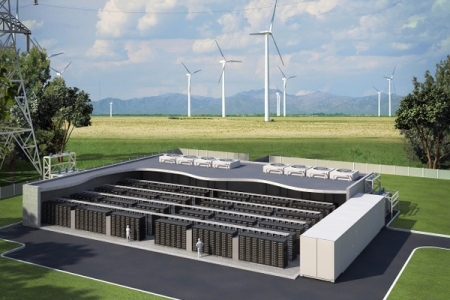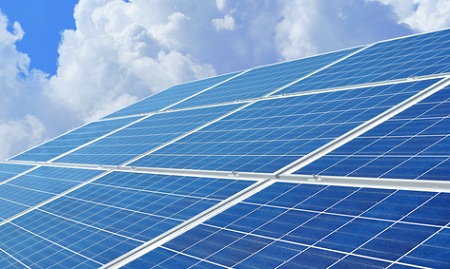Energy storage with batteries has been gaining some ground lately as an aid in dealing with the variable nature of power produced by renewable energy technologies. Wind farms in Hawaii and West Virginia have incorporated battery banks to manage fluctuations in power production. More recently, China unveiled the world’s largest utility-scale energy storage facility, integrating both wind and solar energy.
But can batteries be an answer for larger-scale renewable energy storage and distribution, the way solar thermal is being developed? A Valparaiso, Ind.-based company thinks so. It’s on a bit of a renegade crusade to develop the first utility-scale solar power plant in the U.S. that is capable of providing dispatchable power on demand.

Moraine Power’s proposed 20-megawatt (MW) facility (“GridConPV1,”) combines photovoltaics (PV), energy storage and smart grid technologies to provide on-demand power from solar, wind and hydroelectric resources. According to the plan, GridConPV1 will consist of 232,000 square meters of solar panels, and a battery bank with a capacity of 120 megawatt-hours. The PV array will be sized to generate enough power during sunny hours to deliver power for 12 hours per day—covering demand at night, early in the morning, and late in the evening.
Here’s how it works: During the day, the PV array produces power, which is converted from direct current (DC) to 3-phase alternating current (AC) in the plant’s inverter system. From there, it is gated into the plant-wide distribution system, and routed by a computerized real-time control system (RTCS). The RTCS receives commands from the utility control center (NIPSCO), or the independent system operator (MISO), which manages inter-state transmission.
The RTCS controls the plant output so that it matches demand on a minute-to-minute basis. Depending on electricity demand on the grid, the RTCS can either send power from the PV array to the grid; or to the battery bank. It can also direct grid power to the battery bank to recharge the batteries at night, if necessary.

According to the Moraine Power website, the power plant’s storage facility will also purchase surplus power from area wind farms at night, and sell it during peak demand the following day, earning $50 per MWh, or $500,000 per day. Overall, the facility is said to be capable of generating 52,000,000 kilowatt-hours (kWh) per year, over the 20-year life of the plant.
The project developers say they have already secured a buyer for the power; but they are still seeking $200,000 to help get the project off the ground. According to Moraine Power Executive Director George W. Oprisko, the company has sourced solar panels at $.90 per watt; and, once online, the project will be able to deliver fully dispatchable power at a price of $.08 per kilowatt-hour (kWh) – cost-competitive with grid power in many markets. Moraine Power is seeking donations for the project here.